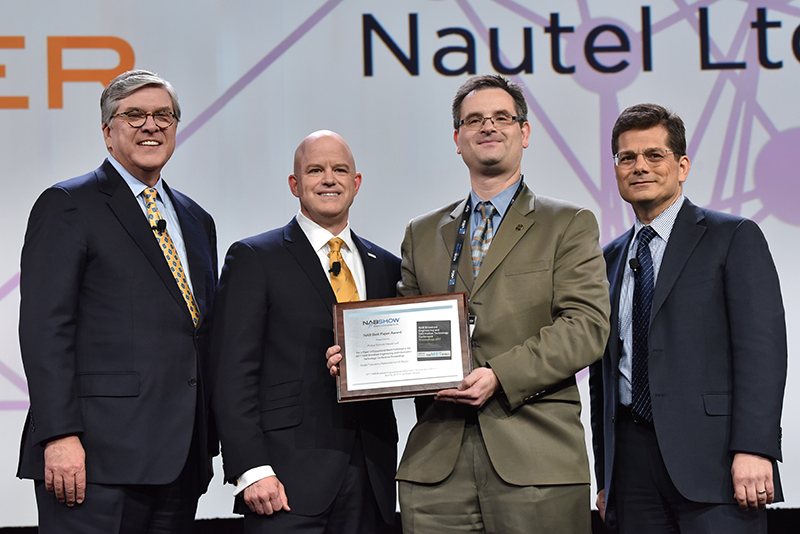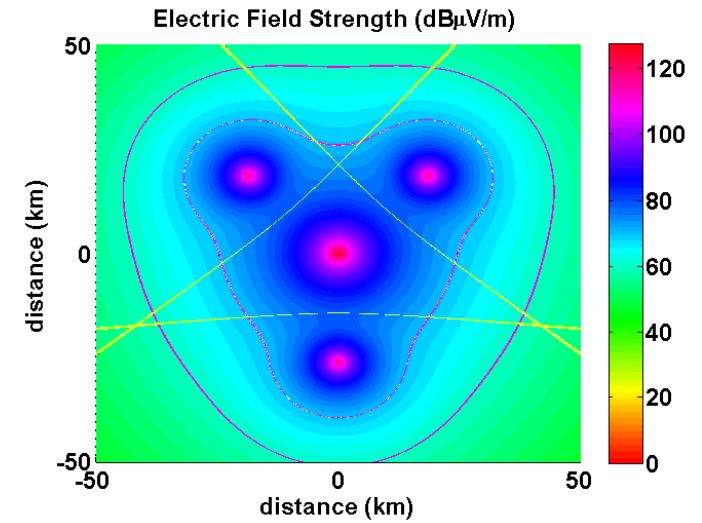This year’s NAB Broadcast Engineering and Information Technology Conference (BEITC) featured nearly 100 papers, but only one was chosen as the best. In this blog, we take a brief look at that paper, authored by Philipp Schmid, Research Engineer at broadcast equipment manufacturer Nautel, Ltd., Hacketts Cove, Nova Scotia.

John Ellis accepts the Best Paper Award at the 2017 NAB Show
Mr. Schmid’s paper, Single Frequency Networks for HD Radio, offers an in-depth look at the use of FM single frequency networks (SFNs) for both analog and HD Radio-equipped FM stations.
- Technical level – this is a highly technical paper yet the material is presented in an understandable fashion;
- Relevance – HD Radio SFNs are an untapped resource, and this paper analyzes almost every aspect; it ties into an all-digital configuration, which is poised to be highly relevant to the connected car and digital dash;
- Quality of writing – extremely well-written and well-organized, it takes the reader from the importance of underlying theory, through a description of the implementation, to the results of field tests;
- Originality – the paper takes an original approach, especially in parts discussing all-digital HD Radio SFNs, where Nautel is pioneering new all-digital HD Radio architectures;
- Use of graphics – includes a wide variety of excellent graphics, all clear and understandable.
Perhaps the most interesting sections of the paper are those on computer simulations showing the different ways that analog FM stereo and mono signals and FM HD Radio signals behave in an SFN environment, and on field trial results from an FM HD Radio SFN test conducted at University of Southern California station KUSC.

Increased coverage area with 3 IBOC boosters
The figure shown, taken from the computer simulation section, illustrates the simulated coverage of an FM station that is augmented by three on-channel booster stations that comprise the SFN. In this configuration, the combination of the three signals results in a significant increase of the HD Radio equivalent 60 and 70 dBu contours over that which is obtainable when using a single transmitter. In Mr. Schmid’s paper, detailed information is included that discusses how a configuration like this can be implemented with a minimum of impact on reception in the regions between the main transmitter and the boosters, one of the primary challenges encountered with SFN configurations.
In the conclusion section, Mr. Schmid notes that Nautel has successfully demonstrated an IBOC SFN implementation at KUSC, showing that FM HD Radio coverage extension is possible even in difficult mountainous terrain, and that the HD Radio signal is well suited for SFN operation. Nautel demonstrates in this paper that reduced FM power levels and elevated HD Radio digital power levels at the booster allow a station to minimize FM interference while maximizing IBOC coverage.
This paper is included in its entirety in the 2017 NAB BEITC Proceedings, available on-line from the NAB Store.

